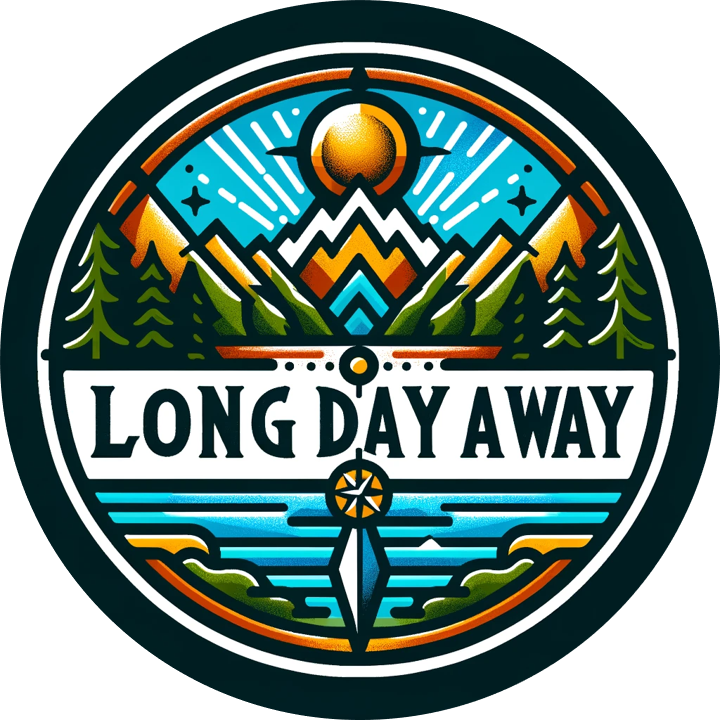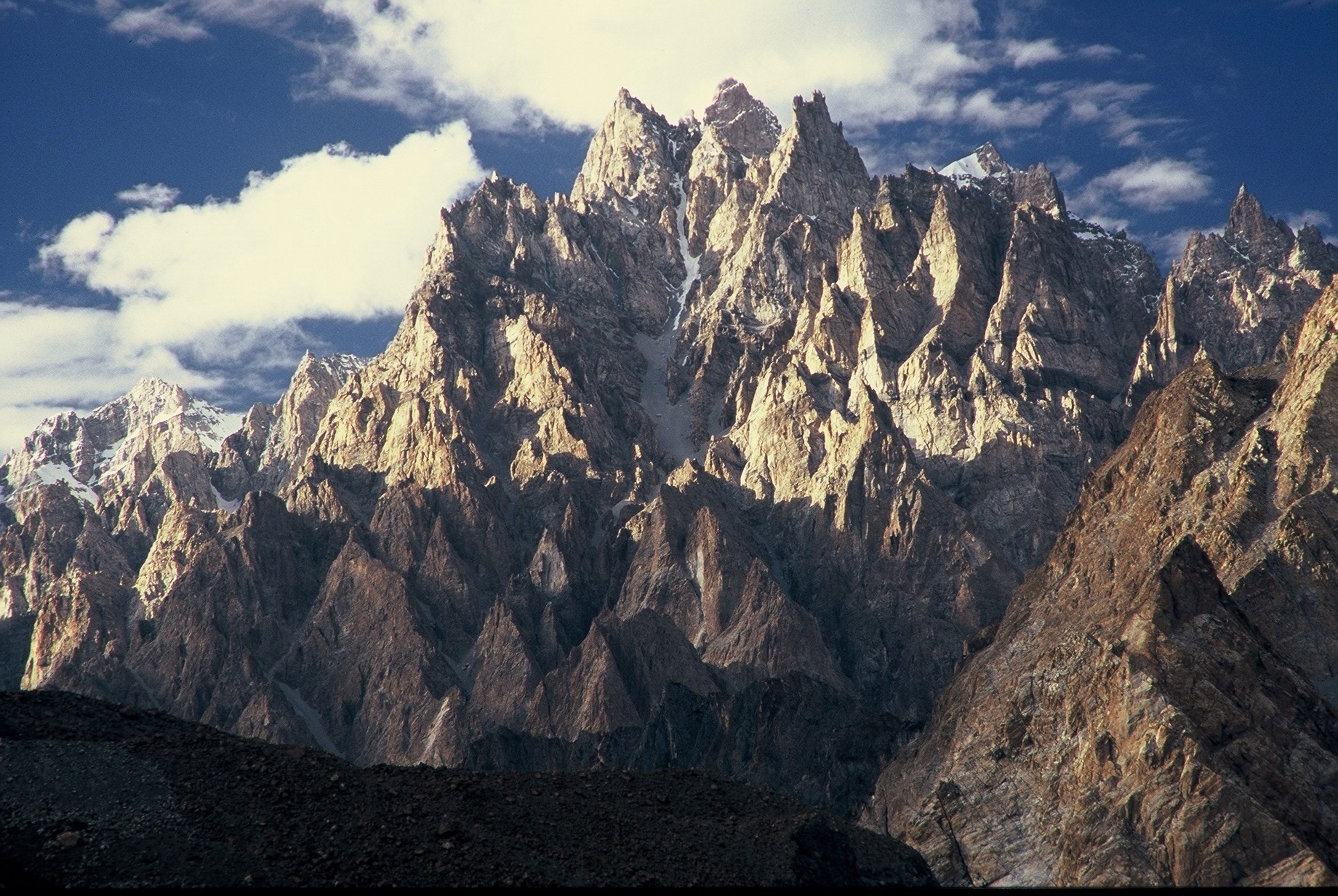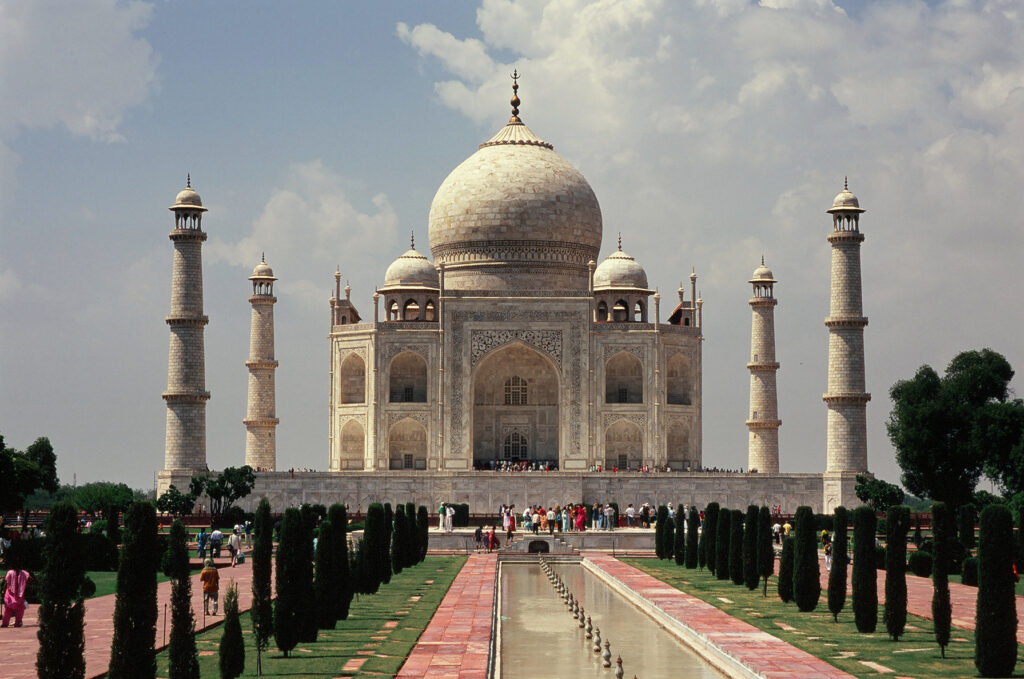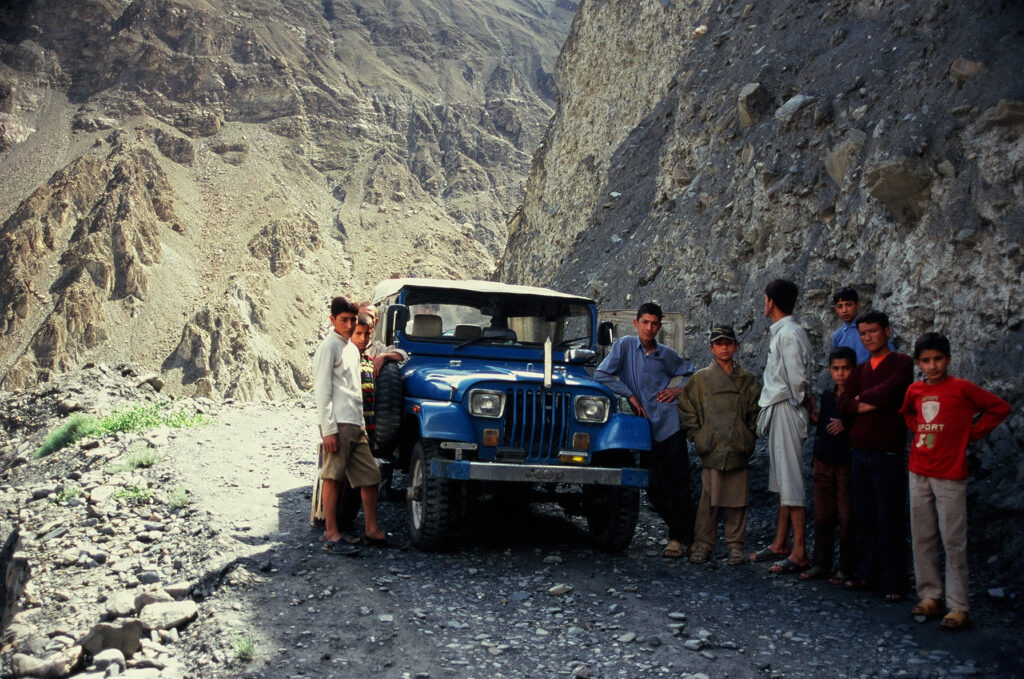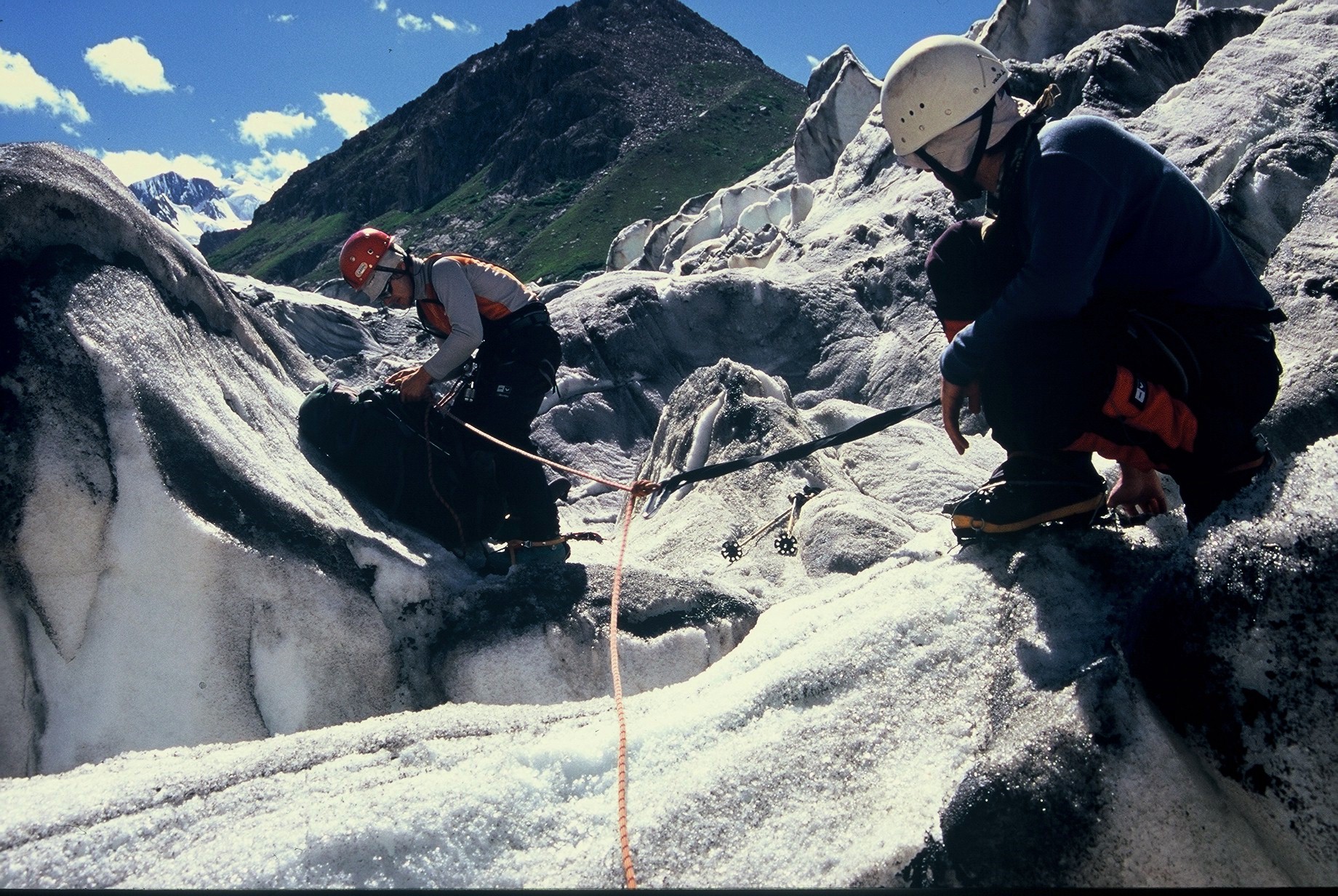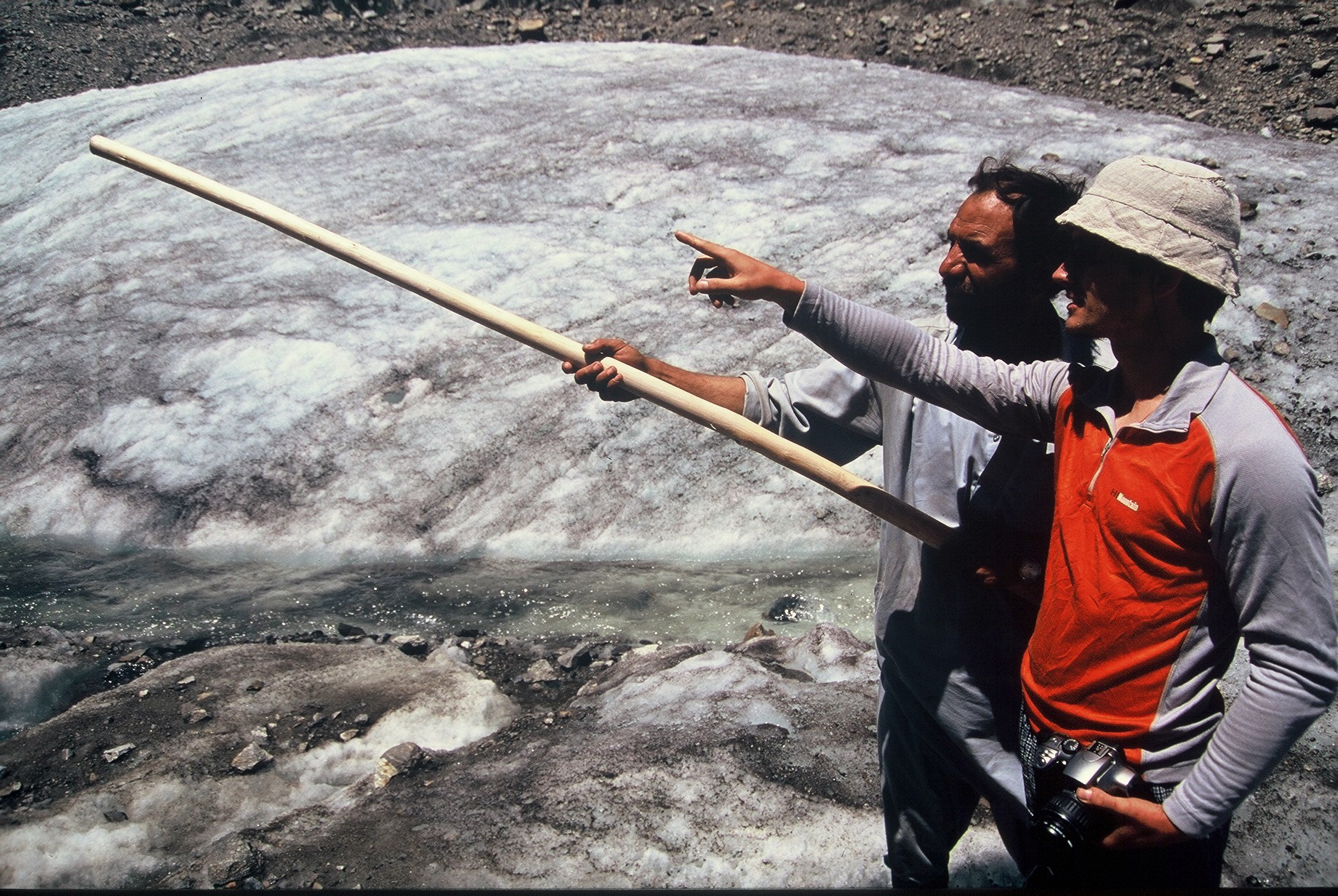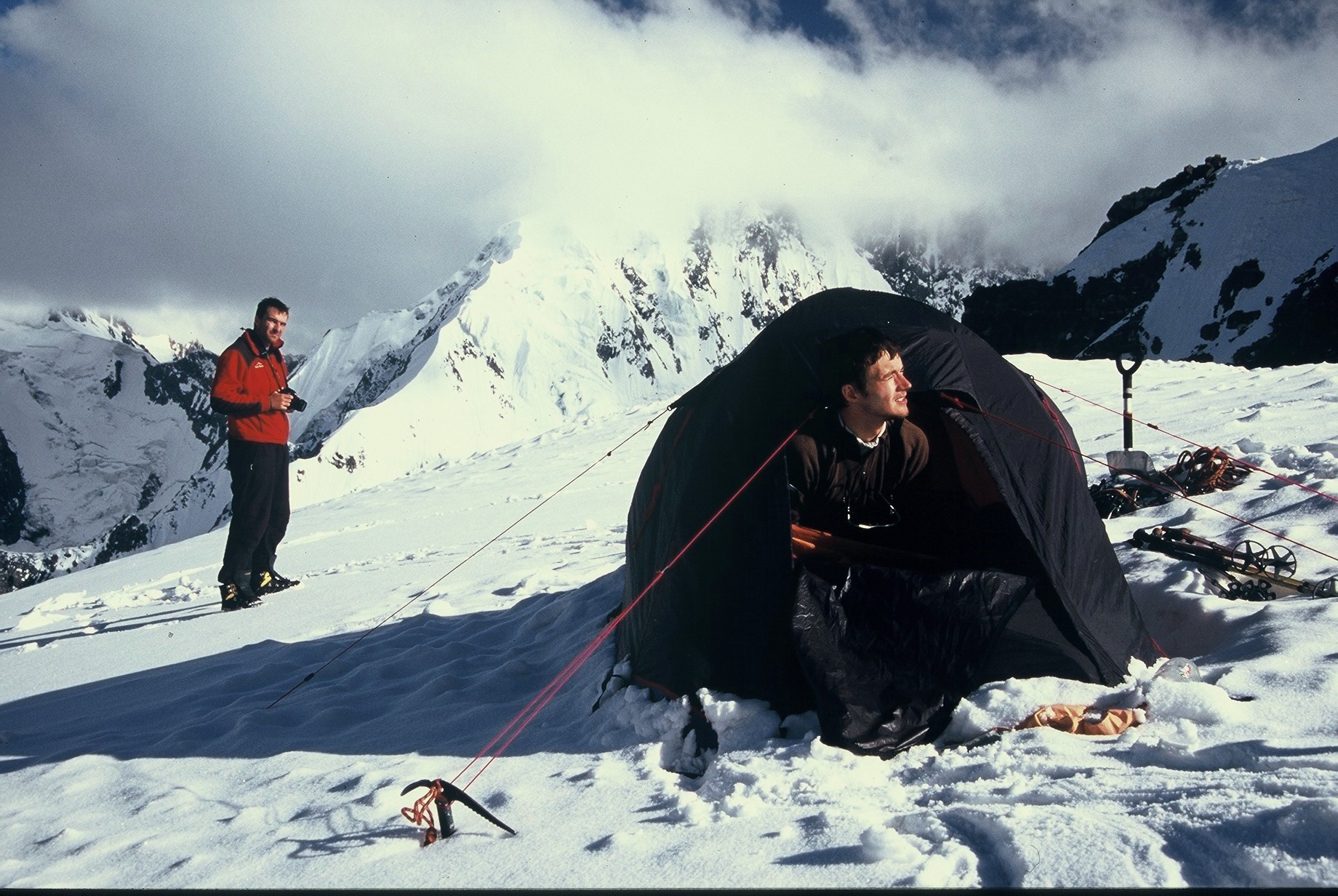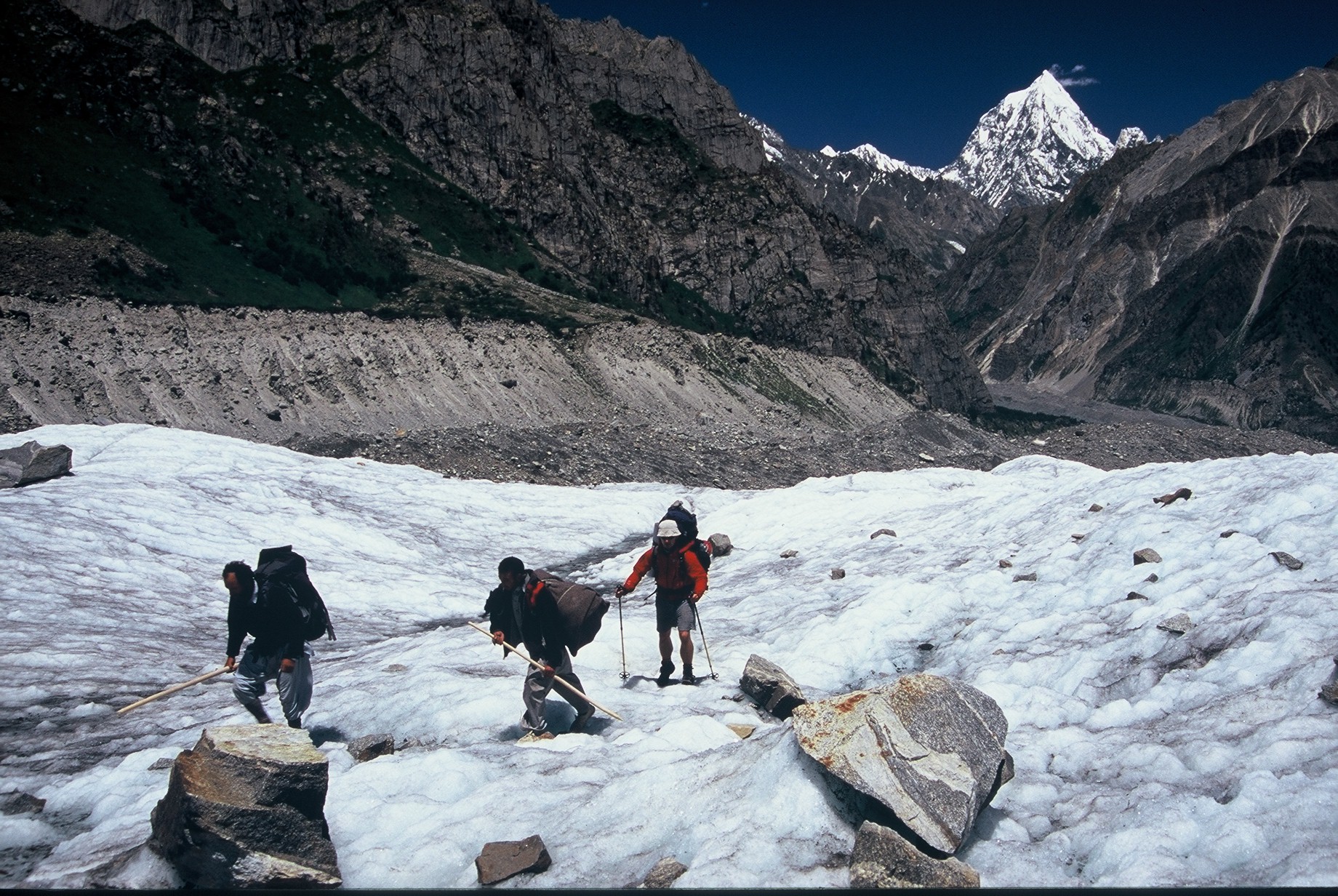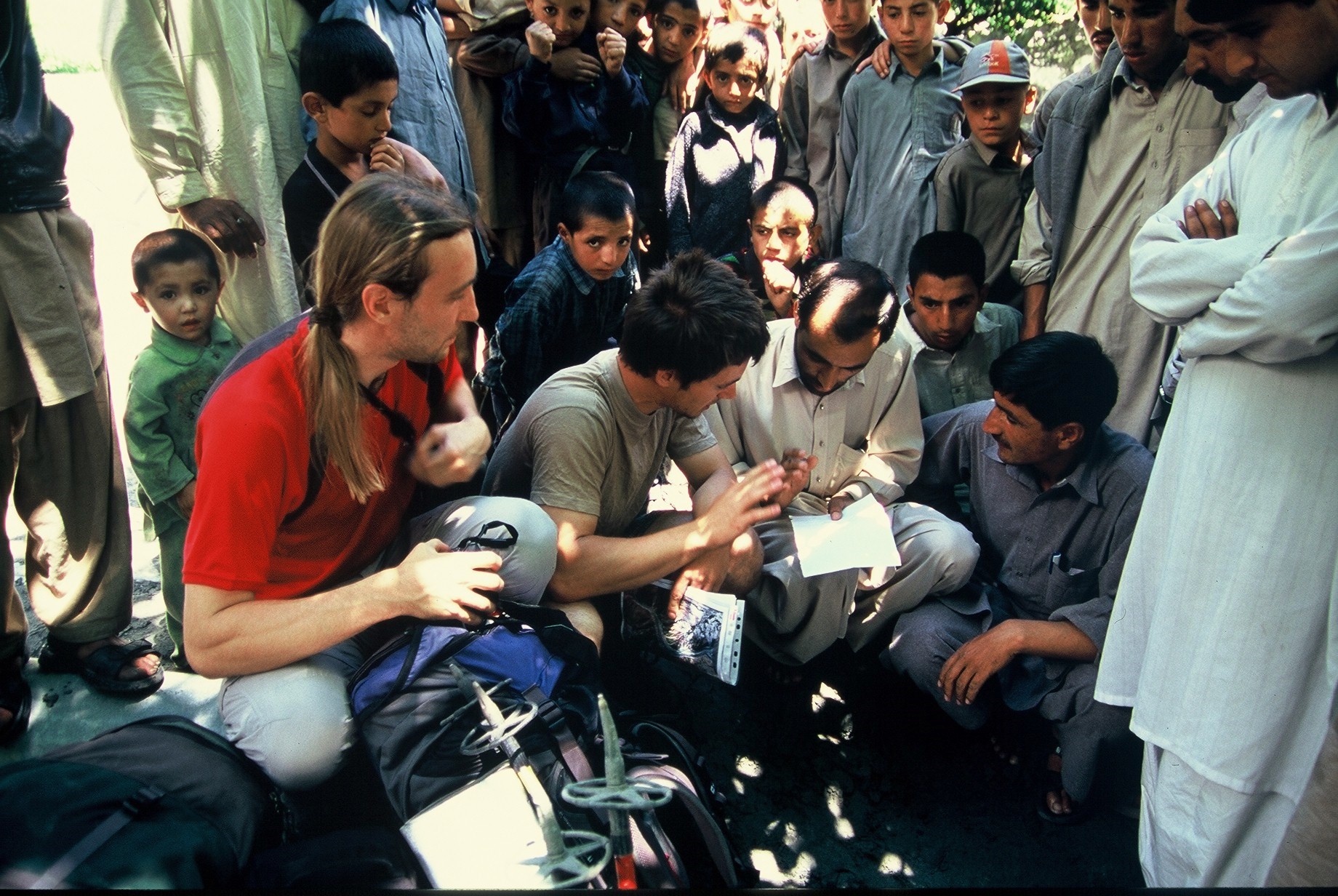India
In my childhood, while reading the adventures of Tomek Wilmowski, I dreamt of being able to travel like him someday. Later, when I first set foot in the mountains, my love for travel intertwined with my passion for climbing. My dreams became more precise; I wanted to go somewhere where I could feel like an explorer. I couldn’t imagine traveling for pleasure without hiking in the mountains. So, when Wojtek Chaładaj proposed a joint expedition to an unclimbed peak and exploration of an unknown valley in the Pakistani Karakoram, I didn’t hesitate for a moment.
A year later, after bidding farewell to my loved ones and the leader and initiator of the expedition, Wojtek Chaładaj, accompanied by Kuba Gałka, I boarded a plane to Helsinki. According to the plan, we flew to New Delhi from there. It was a few minutes past midnight when we disembarked. We were greeted by scorching heat of over thirty degrees Celsius, and it was hard to breathe. I was terrified of how I would survive in this climate for the next five weeks. The hotel had a fan, so it was bearable there. Despite the fatigue, we couldn’t sleep for long that night, excited about what awaited us.
The next day, we split up. Kuba stayed in Delhi to take care of the formalities related to our departure, and I went to Agra to fulfill one of my dreams – to see the famous Taj Mahal. In Agra, everything was on a tight schedule – an hour at the Taj, half an hour at the Red Fort, and back to Agra. The train I took back to Delhi was significantly delayed, and I thought we wouldn’t be able to leave for the west on the same day. Fortunately, the train to Amritsar was also delayed.
The next day was spent drinking juices squeezed from fresh fruits, getting used to the incredibly spicy Indian cuisine, and visiting the Golden Temple of Sikhs. The place is extraordinary, with pilgrims coming from all over the world. Everyone is very friendly, and you can eat and sleep there for free. The name “Golden Temple” is not without reason, as its dome is adorned with gold. It is the most important Sikh shrine in the world, with four entrances, one from each side to signify that it is open to everyone. From our perspective, the Temple had one significant drawback – we had to walk barefoot, and the marble floors, heated all day by the sun, were so hot that we had to sit and lift our feet from time to time to ease the pain. Apart from that, it was one of the most fascinating places I have ever been to.
The Week of Danger
The next morning, we set off to Pakistan. We crossed the border without major issues, although it was pouring rain. We waded through knee-deep water, completely soaked with not a dry thread on us. We reached Lahore, where we managed to explore as well. There, we met extraordinary people – Catholics living in an Islamic republic governed by the laws of the Quran. They had established a school for disabled and underprivileged children. The school was interfaith, which was a remarkable success for this community. Nearby, they had also set up a two-faith cemetery, which was truly exceptional in a country like Pakistan.
At night, we boarded a train to Rawalpindi. We were supposed to pick up Wojtek from the airport the next day. However, this journey didn’t go entirely smoothly as Kuba’s stomach couldn’t tolerate Pakistani food, resulting in constant trips to the toilet.
In Islamabad, we found a hotel, and there, I too experienced some stomach sensations. Little did I know that they would haunt me for the next sixteen days.
The next morning marked the long-awaited arrival of Wojtek. Unfortunately, it began on an unlucky note as his luggage containing all the climbing equipment for the expedition got lost along the way. We were forced to wait for three more days in Islamabad for the flight from London that was supposed to deliver the gear. Meanwhile, riots broke out in Pakistan due to the government’s pro-American policies. Students had taken over the Red Mosque, located about a kilometer from our hotel, and the heaviest fighting was centered around that mosque. Initially, we were terrified and reluctant to leave our hotel room, but after some time, we grew accustomed to the situation.
Our second trip to the airport also ended in disappointment – the luggage didn’t arrive, and we had to wait for two more days. Card games at the hotel had already become tiresome, so we went to the Pakistani zoo and managed to obtain permits from the court for drinking alcohol (which is prohibited in the Islamic Republic of Pakistan). Since we were not Muslims and “needed alcohol for religious rituals,” the permits were granted and stamped in our passports.
The third journey to the airport also resulted in disappointment, but we decided not to waste any more time and headed to Gilgit, where we would arrange some equipment and then set off into the mountains.
Karakoram
In Gilgit, we met a Polish expedition that was withdrawing from Kampire Dior. We recognized each other from two years ago at Pik Lenin. They kindly lent us some necessary equipment. Another Polish expedition, Gulmit Tower 2007, helped us arrange a jeep to go further into the mountains, and finally, we set off. Our destination was the village of Bar, but about 10 kilometers before reaching it, a mudslide blocked the road, and we had to continue on foot. In Bar, we hired two porters and continued our journey upwards. We walked along the slopes of a beautiful valley, with the magnificent peaks of Batura, Soni Pokhush, Toltar, and several others visible in the distance. However, this idyllic experience was interrupted by hourly trips “to the side” due to food poisoning. No medicine seemed to help, so I had to get used to it. Nevertheless, I started to weaken significantly due to dehydration.
After two days of trekking, the porters took pity on me and prepared a herbal infusion from purple flowers that grew in the valley. I was so desperate that I drank the concoction and, following their advice, even ate the flowers floating in it. Surprisingly, my symptoms quickly improved, but I also felt an unnatural burst of energy. We were already above 3000 meters above sea level, but I no longer felt the effects of altitude, and I had so much energy that during our breaks, I climbed mountains to take photos, fetched water, jumped around, unable to stay still. Unfortunately, the effect was short-lived, and exhaustion returned after a few hours.
After three days of trekking, we entered the Satmarau Valley, which we wanted to explore, and for the first time, we saw the purpose of our expedition – Purian Sar N. It was an incredible feeling to reach a place where no tourists had been before. We set up a base camp at an altitude of about 3800 meters above sea level. We bid farewell to our porters and spent the next two days on a rather jagged glacier, which we had to cross to reach the ridge that would lead us to the summit. Walking between seracs increased our adrenaline levels, and we constantly used the equipment borrowed from Kampire Dior. However, we managed to establish a higher camp at an altitude of 4200 meters above sea level on the mentioned ridge without significant problems.
What surprised us was that despite the high altitude and the reputation of the Karakoram as one of the driest mountain ranges in the world, our advanced base camp was set up on a meadow with access to water and breathtaking views.
The next three days brought problems with Wojtek’s stomach, bad weather, and general boredom. But then the sun began to shine again, and we quickly gained altitude. We established an intermediate camp on the glacier (5100 meters above sea level) and then another camp at 5450 meters above sea level. However, luck turned against us again. The ridge we planned to ascend turned out to be a vertical, icy wall crowned with a snow overhang, which we had to give up on due to our equipment’s limitations. The alternative was to climb along the ridge we had been walking on to reach the culmination at 5700 meters above sea level and descend to a col. Unfortunately, technical difficulties stopped us at an altitude of about 5600 meters above sea level.
Slightly disappointed, we decided to retreat. The next morning, we packed up our camp, descended to the advanced base camp, then to the expedition base camp, and began the descent. That day we had to tackle a challenging waterfall because the path collapsed while we were ascending, leaving us no way to pass. We handed our backpacks to one another in the pouring water, being careful not to slip, and step by step, we made it to the other side. Afterward, we needed to rest mentally for half an hour. Finally, somehow, despite extreme fatigue, we reached Bar.
In the village, we arranged for a jeep to take us back to Gilgit. We left in the evening, with two identical drivers – twin brothers dressed alike, speaking the same way, virtually identical. After the mountain experiences, the adrenaline level in our veins began to drop, and we reminisced about how Purian Sar N had treated us. At some point, the drivers veered off the main road and headed towards the mountains. Later, we entered a cave in the rock, and then our adrenaline levels soared higher than ever during this trip. We drove through the cave for a while and emerged onto a hanging, wooden bridge. Workers were on the bridge to maintain it, and they didn’t want to let us through, but after a brief argument, the twins convinced them to allow us to pass. One of the twins removed pieces of wood, nails, and other obstacles from under the wheels, while the other slowly drove the jeep. The bridge swayed from side to side, and until we got off it, we weren’t sure if we would survive that adventure. We continued the rest of the journey without major obstacles.
The Charms of Pakistan
After resting for a day at the Madina Guesthouse in Gilgit, during which Kuba visited the dentist, we headed to Karimabad to see Baltit Fort. We started buying gifts for our loved ones and also went on a one-day trek to Ultar Meadow, where we enjoyed the breathtaking views of Ultar and Lady’s Finger peaks.
From Karimabad, we traveled to Gulmit to visit a carpet factory and then continued to Passu, where we stayed at Akbar’s Passu Peak Inn and had the best meal of our entire trip. I highly recommend Passu Peak Inn to anyone visiting the area. In Passu, we went on a several-hour hike to a pedestrian bridge suspended over the Hunza River. Crossing that bridge was also a thrilling experience, as it was constructed from steel cables and haphazardly placed pieces of wood. We had to concentrate intensely before stepping onto it, but eventually, our desire for another adventure overcame our fear.
Starting the journey back, we passed through Karimabad again to return to Gilgit. There, we bought bus tickets to Islamabad, packed our luggage on the bus roof, and set off. Karakoram Highway twisted along cliffs, and the bus occasionally stopped for the driver to clear rocks from the road to make it passable. Around 2 AM, the bus stopped again, but this time there was a loud noise. Shortly afterward, two masked men boarded the bus. One of them carried a rifle, slung over his shoulder, and the other had a pistol. As we stood out from the other passengers, they immediately took an interest in us. They approached me (since I was closer to the aisle), pointed the gun at my head, and demanded money. I showed them my bag. They searched it, found some money, looked surprised that it was so little, and then started yelling something in Urdu, waving the pistol in my face, and focusing on Wojtek. He had most of the money in his backpack on the bus roof, so they took what he had on him. Due to the limited access, they didn’t torment him for long and moved on. Fortunately, unpleasant incidents were avoided with Kuba as his dark complexion and short stature helped him not attract attention. The bandits reached the end of the bus, and everyone was giving them money while we contemplated foolish ideas of trying to overpower them. Fortunately, no one was brave enough to attempt it. As they were about to leave, the shorter of the men, the one with the pistol, approached me again, took my bag, searched it again, and found more money. He took everything I had and started yelling at me:
– Angreze!? Angreze!?
– No Angreze, Polak, Polonia, Poland, Polacco. – I replied.
He didn’t understand, hit me in the face with the pistol butt, and shouted:
– Americano!?
– No Americano. – I answered, showing my passport.
The bandit hit me again, grabbed my arm, and tried to pull me off the bus. I thought that if I allowed that, it would be the end, I would die. So I clung to the seat and didn’t let him move me. The bandit was much shorter and weaker than me, and I started considering whether I had another way out – to try my luck and attack him. I saw that he was nervous as well. His companion, standing in the narrow bus aisle with a rifle slung over his shoulder, was essentially defenseless. The only unknown was what was happening outside – were there more bandits? If so, how many? Would anyone help me if I tried to overpower the attacker? At that moment, one of the passengers stood up and translated to the bandits that I wasn’t English or American, and they left the bus. We stopped a few kilometers later and filed a report with the police. The rest of the journey proceeded calmly, and fellow passengers kept coming to me, offering drinks, food, and asking how I was feeling. It took me a long time to calm down, and the fear turned into anger. When we finally arrived in Islamabad, I unleashed it. While Kuba and Wojtek went to the hotel, I went to the transport company’s office and demanded compensation. I argued with higher-ranking officials, showed them that it was my birthday that day (it was the most memorable birthday of my life), threatened them with the embassy and publicizing the incident. After a few hours, I recovered $120 out of the $300 that were stolen from me.
I went to the hotel, where the guys were already done with their showers and resting. We decided that I would take a shower, and then we would visit the Red Mosque, where the fights had taken place just before our trip to the mountains. When we were getting ready to leave the hotel, Al Jazeera reported: “Another Blast in Lal Masjid. 11 killed.” This convinced us to take Wojtek to the airport the next morning and leave Pakistan for India.
In Amritsar, we parted ways with Kuba. He still had a week of vacation and wanted to spend some time in the north. I headed to Rajasthan, to Jaipur. After the emotions we experienced in Pakistan, solo travel wasn’t such a great pleasure for me anymore, but I’m glad I visited the city. Besides its magnificent monuments, such as City Palace, Amber Fort, or the Jantar Mantar observatory, there were other attractions, like a camel standing at a red light amidst cars, snake charmers calmly demonstrating cobras to passersby, and many others that an average person only knows from travel books. From Jaipur, I returned to Delhi, where I visited the famous Delhi Red Fort, Jama Masjid – the largest mosque in Delhi, and took a walk through Lodi Gardens.
In the evening, I went to the airport, where an attempt was made to extort a large bribe from me, and exhausted, I flew to Helsinki and then to Poland.
